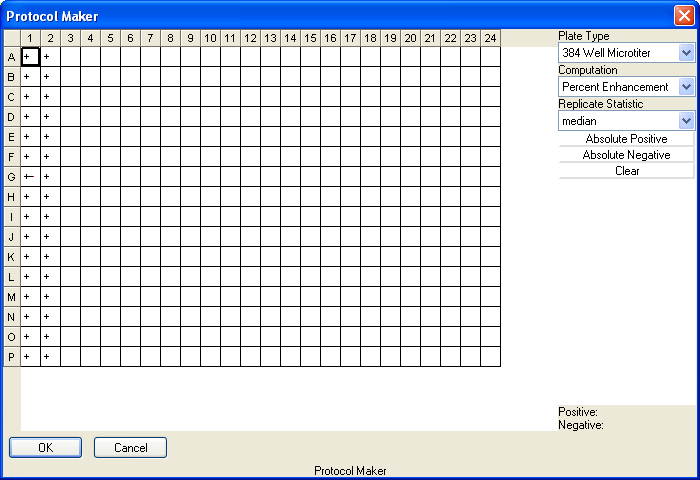 |
SLIMS |
 |
Inventory |
 |
Experiments |
|
|
Adding an Experiment
Adding an experiment is the crux of the SLIMS system. To add an
experiment you must have the following:
- plate files with barcodes (If the plate does not have barcodes,
you can set the barcodes manually)
- the barcodes must be present as a SLIMS plate. That is,
SLIMS must have the plate barcode loaded into the inventory system as a
copy of a plate (see plate reformating)
To add an experiment, click on the results navigation menu and then
select
the project to which you would like to add an experiment. You
should
see something like the following:

The experiments tab should be highlighted and the
menu
items should include, "Add", "Extend" and "Delete".
Selecting "Add" should reveal the following dalog

Enter an experiment name and the following wizard
will
appear:

The first step is to locate the plate files that you
wish
to load.

To add plates you can drag them to the main window or
add
them one at a time using the Browse for Files button.
Additional commands are as follows:
Command
|
Description
|
Manually
Set
|
Allows you to set the parent
barcode of the
plate files for the purposes of loading into the database. This
is
useful when the plate barcodes have not been loaded into the database.
Manually setting compounds allows you to your plates by selecting a
parent plate for each new plate. The parent plate is used to
indicate what compounds are in which wells for the plates.
|
Clear
|
clears the loaded plates. |
View
All
|
shows all the selected plates in
a multiple plate view allowing you to see all the plates at the same
time, check for systematic errors and reject plates from the experiment.
|
Make
Reader
|
If the some files are not
readable, this wizard allows you to make a reader for the file. A
walkthrough guide is available here.
|
Remove
Selected
|
Remove the selected files from
the view.
|
View
Selected
|
View the plate with the standard
plate viewer.
|
If you would like to follow along with the rest of the tutorial, please
install
the tutorial package and select
the
"Add Experiment" database. This database contains all the
compounds
you will need to load the primary SMA data that is located by default
in
the "C:\Program
Files\SLIMS\tutorial\primary SMA screen data\NINDS C33A 02-07-02"
directory.
You can browse to this directory or simple drag all the plate
files
to the main window. Add all the files that begin with NINDS.
The screen should now look like:

It is a good idea to click on " View All" to get an assay level view
of the data. The following screen should apear:
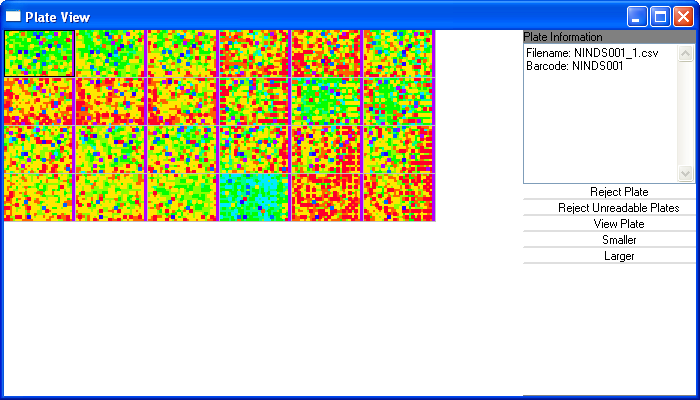
Clicking on a plate will update the
plate information window with the filename and barcode of the selected
plate. For this screen, there is some obvious plate effects for
some of the replicates. (There are six replicate plates for every
plate) You can make the plates larger by clicking on the larger button and smaller by
clicking on the smaller button
and reject the plates by clicking on the " Reject Plate" button. All
rejected plates will be removed from the analysis. The various
options in the View All button are available here.
If any plate file cannot be read, it will be
highlighted.
Clicking on the View selected button will show the text of the
file
if it cannot be read. Otherwise, it will show the plate file in
graphical
format. You may make new file readers for plates that cannot be
read.
Once all the plates are readable, clicking on the next button will
allow you to set the scoring protocol.
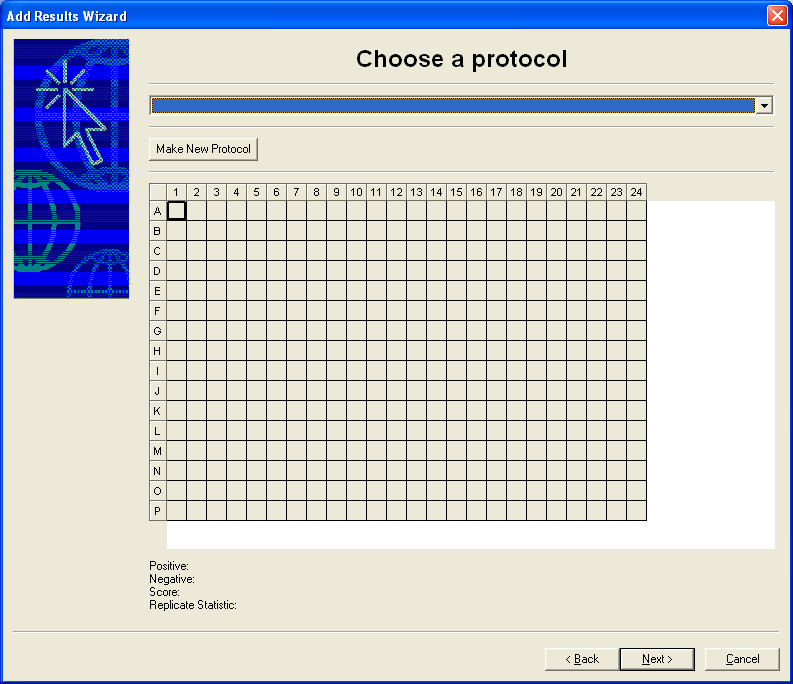
At this point you can select an existing protocol or
create
a new protocol for reading the assay plates.
Protocol are relatively simple affairs. To create a protocol you
need
to specify:
- the plate type (i.e., the size of the plate to form the scoring
protocol
- the location of the positive and negative controls
- how to deal with replicates
- the scoring system to use
For this protocol, select a 384 Well Plate. The window will now
update to have the correct number of plates and wells:
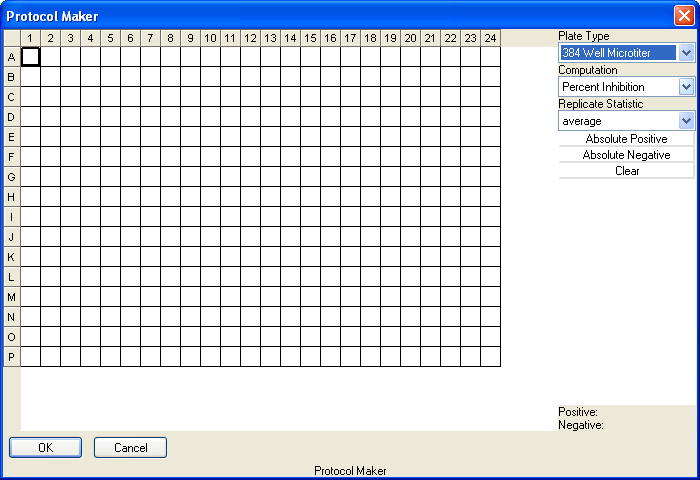
Select the computation as "Percent
Enhancement" and the replicate statistic as "median"
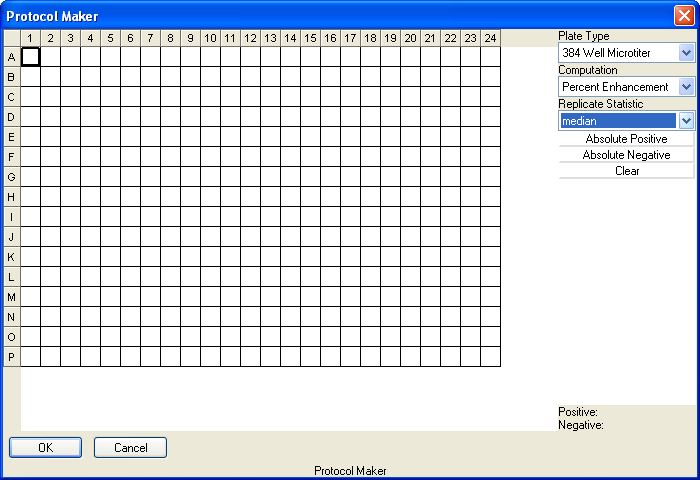
Next click on well A1 and, while holding
the mouse button down, drag the mouse to P2. A popup menu will
appear.
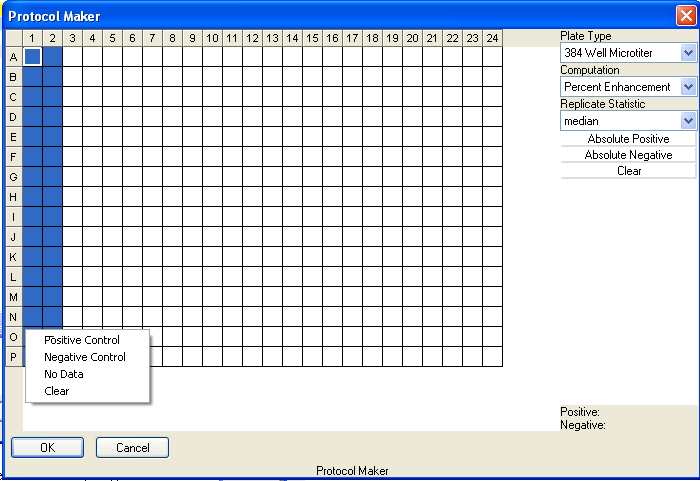
Select Positive
Controls from the menu. The window will now look like this:
Next, make the
For the SMA data, make the protocol look as follows:
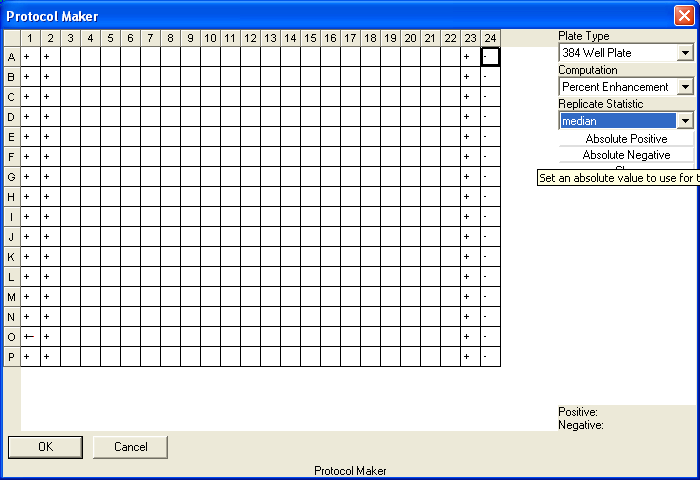
| Note: to select wells for
positive and negative controls,
simply click on the first well, hold the mouse button down and drag
over
the selected region. When the mouse button is released, you will
see
a pop-up menu where you can select the type of control. |
When you click on OK you can select the name for this protocol. A
good
suggestion is "Standard Percent Enhancement".
The window will now reflect your choice of protocols

Clicking on the next button will reveal the correct
systematic
errors options.

If either the positive or negative controls should be the average of
the
plate, you can correct their systematic errors. If either the
positive
or negative controls should be radically different from the average
response
of the plate, leave them unselected. If you would like to view
the plates again, simply click on the back button until you get to the
plates page. From there you can click on the view all button.
For the case of the SMA data, the positive controls are essentially no
effect
so it is safe to correct these wells. The negative controls are
wells
with no cells, so these wells should not be corrected. You can
click
on the BACK button to select View All from the plate selection window
in
order to get an idea about how the plates are loaded.
It is always safe to leave the positive and negative controls
unselected,
although the plate corrections might not be as good.
Once you have decided, click on Next and the plates will be loaded.
When the data is loaded you can select finish
and select the experiment you just loaded.
|






